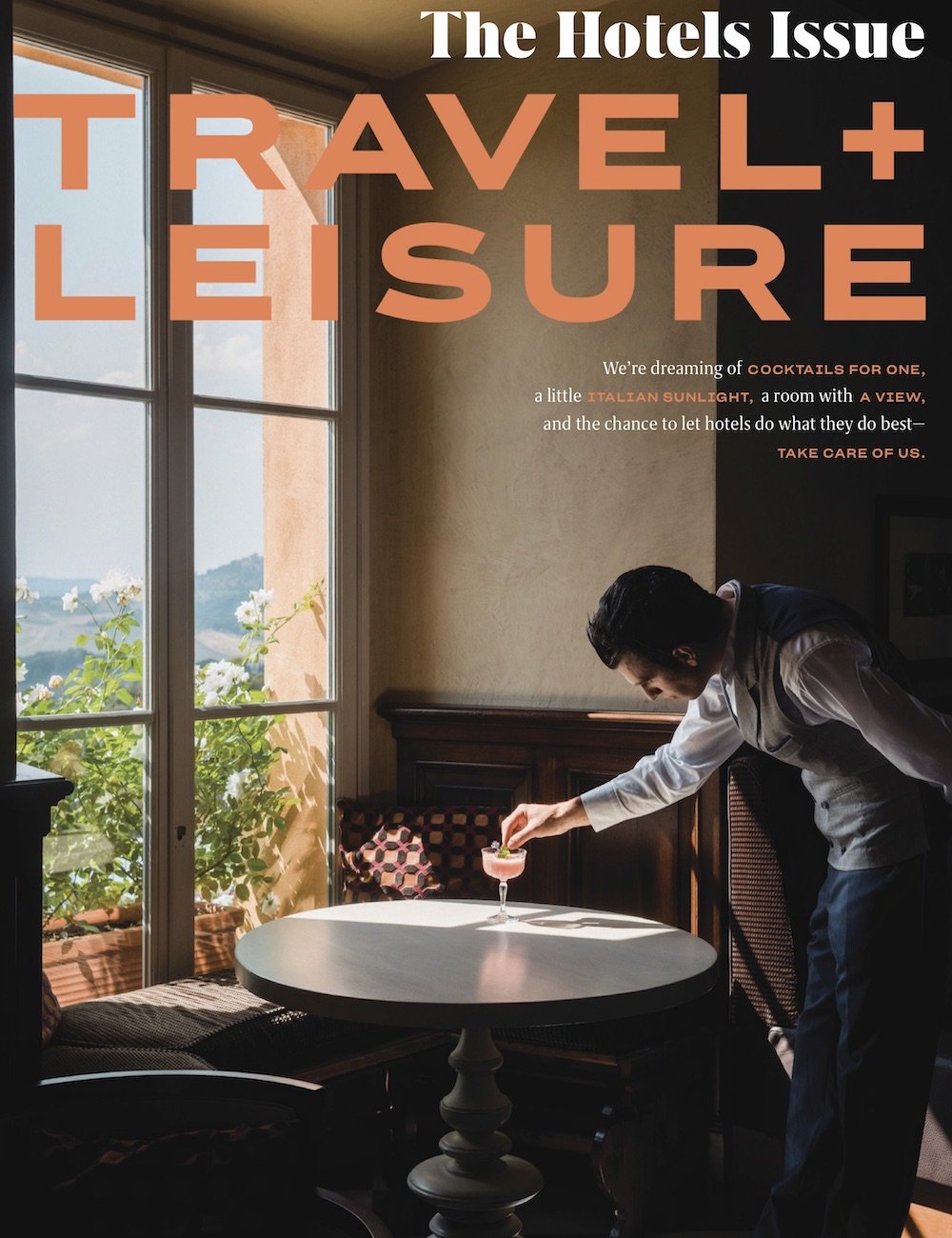First published in Travel+Leisure (US).
A wall of static hissed at us from the telemetry receiver. As the sun dipped, the sandstone of the Waterberg massif lit up in shades of ochre and orange. But we were running short on time. As we strained our ears for the telltale blip of a radio collar, Arie Swiegers, my field guide at Marataba Conservation Camps, swung the aerial south towards a copse of acacia. Suddenly, the signal from collar #250, a young male cheetah, leapt from the static. Shouldering his rifle, Swiegers shot me a wide grin: “Let’s go.”
We were tracking cheetah on foot not for the thrill of a great sighting, or a perfect shot for the ‘Gram, but in the name of conservation. Responsible predator management is fundamental to conserving Africa’s wild spaces, and regular monitoring allows Marataba’s conservation team to ensure no cats have strayed into surrounding farmland, and to plan interventions needed for genetic diversity. It all ties in with the philosophy of conservation-led tourism that underpins South Africa’s Marataba Contractual National Park, three hours’ drive north of Johannesburg. Put simply; here they encourage guests to get their hands dirty.
For unlike many private reserves in southern Africa, Marataba is “a conservation project supported by tourism. It’s not tourism supported by conservation,” explained Dr André Uys, Marataba’s general manager and head conservationist. And Uys’s hope is that by getting stuck in, guests will leave with a new appreciation for the complexities of modern conservation.
It’s not the only innovation Marataba brings to the world of African conservation.
When it was proclaimed in 2000, Marataba Contractual National Park pioneered a new model of public-private partnerships for protected landscapes. Though privately owned and operated, the 51 000-acre Park borders the state-owned Marakele National Park, with a fenceless boundary and joint management plan protecting a vast tract of savannah bushveld.
The next morning had me up before dawn, getting my boots dusty out in the bush. We hopped off the Land Cruiser for Swiegers to show me how they are combating soil erosion; a scattering of indigenous grass seeds, covered with a quick rake, and the natural landscape gets a welcome head start. Guests can also help track the impact of this ongoing conservation work, assisting with vegetation assessments to measure species diversity and available biomass at 27 monitoring sites.
But while the flora’s fine, it was the fauna that had me most excited.
Due to the pandemic I’d previously missed the opportunity to join a three-day Rhino Conservation Safari – which offers hands-on involvement in rhino capture, ear notching and DNA sample collection – but we got lucky on the next drive, stumbling across a small herd of white rhinoceros in a remote valley.
With the headwaters of the Matlabas River gurgling past, framed by the massif of the Waterberg, Swiegers stopped to explain the Park’s system of ear notch identification. Using binoculars and an identification chart, we logged the sighting on the Earth Ranger app, providing useful data that would help conservationists better manage the Park’s wildlife.
But this is no boot camp, and in each day at Marataba the conservation-focused activities are woven subtly into your stay, the warp of a few good deeds against the weft of a luxury safari.
After each morning out in the reserve I returned to my airy tent at Explorers Camp dusty and smiling. Here just six under-canvas suites, each with a private deck gazing out into the reserve, are spaced well apart in a stand of acacia trees. A welcome shower, followed by a cold beer at the pool overlooking the waterhole, and any tiredness from the morning was soon forgotten. Lunch – platters of charcuterie, fresh salad and homemade quiche – arrived with a bottle of chilled South African chardonnay.
That afternoon we stopped for a look at Founders Camp, a more luxurious exclusive-use option at Marataba; with four contemporary tented suites overlooking the permanent Matlabas River. While the suites and communal lounge are beautiful, all screed floors and dressed-stone walls, it’s the riverside fire-pit that will stick in your memory. With camp chairs gathered around a crackling camelthorn campfire, it’s where friends and family can reconnect beneath southern skies, as the river’s resident pod of hippos grunt and chortle late into the night.
At both camps, each booking is allocated a private vehicle and guide, allowing plenty of flexibility in personalizing each day’s experience. I’ll admit, it was tempting to simply sit back and enjoy the twice-daily game drives and another gin-and-tonic, but then my time would have been wasted. Marataba was at its best when I was busy, out in the bush with African dust on my hands.
That was especially clear on my last morning in the Park, as Swiegers led me out on a bush walk doubling as snare patrol. As we wandered near the fence line, Swiegers pointed out the array of acacia species that flourish here: camel thorn, sweet thorn, and umbrella thorn (there’s a clue in those names: you’ll want long trousers and sturdy boots for bush walks).
And our snare patrol slowed us down in all the right ways. We weren’t simply covering ground or ticking off sightings, but engaging all of our senses. Admiring the lilac and yellow flowers of the sickle bush, inhaling the heady scent of sweetthorn in an early-summer bloom, and deciphering the spoor left by animals passing in the night.
In these few hours of giving something back, I felt a closer connection to the landscape. I realised the true magic of Marataba wasn’t sipping sundowners by the waterhole, or taking a dip in the rim-flow pool at Founders Camp. But rather out here in the bush, with sweat on my brow and Marataba’s soil beneath my fingertips. I was no longer just a visitor, but rather invested in this wild space, and in safeguarding its future.





















